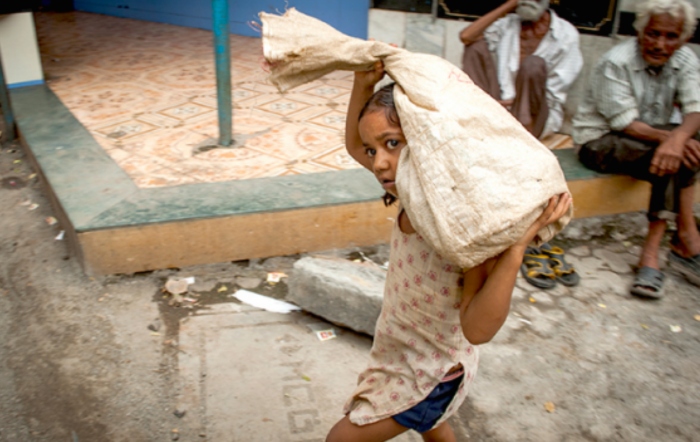'Millions of children trapped in forced child labour'
More than 200 million children, as young as five years old, are trapped in labour conditions such as forced labour and the sex trade, according to a new report released by humanitarian agency GFA-World

The report Child Labour: Not Gone, But Forgotten highlights Bangladesh being top of the list of countries where child labor is most prevalent, followed by Chad, Democratic Republic of the Congo, Ethiopia and India. It aims to boost awareness of the tragic situation and campaigns to stop the labour exploitation of children.
GFA’s new report highlights other startling child labor facts including:
-
If the 218 million children involved in child labor constituted a country of their own, it would be the fifth largest country in the world
-
More than 134 million children are in forced labor in Africa and Asia alone
-
An estimated 2.7 million children around the world die every year from work-related injuries and illnesses
-
Almost half of the world’s forced child laborers are under 11 years old
-
Among the world’s 218 million working children — a number that represents two- thirds of the population of the United States — many work to help feed their families. They start working as young as age five, sifting through trash for recyclable items, or working as domestic servants for a few cents a day.
Dr. K.P. Yohannan, founder of GFA-World said, 'The exploitation and abuse that children face in many parts of the world right now is staggeringly evil and beyond shocking. As their struggle becomes more visible via social media and other media channels, we in the West can’t pretend we can’t see what’s happening. God sees each child caught in child labor, slavery and sex trafficking, and he calls every one of us to pray, engage and act on their behalf.'
While most countries have laws against child labour, in many of the poorest nations the laws are rarely, if ever, enforced. Around the world each year, an estimated 2.7 million people – including many children – die from work-related causes and accidents. Many others are maimed, or suffer serious work-related injuries, including amputated limbs. Malnutrition along with the physical labor they’re forced to do can cripple children’s bodies.
In South Asia, Lakshmi’s 10-year-old sister works in bonded labour – security for repayment of a debt – seven days a week, starting at 7 am and finishing at 9 pm. Lakshmi says, '(Her employer) treats her very badly, he hits her if he thinks she’s working slowly; if she talks to the other children, he yells at her. He comes looking for her if she’s sick and can’t go to work. All I want is to bring my sister home.' It would cost $8.50 to free his sister from bonded labour – but Lakshmi’s family is too poor to afford it.
After his father died, nine-year-old Nadish ran away from home. He met an elderly man who took him to his village — but there Nadish was locked in a hovel, forced to clean up animal waste day after day, and fed on scraps. Two years went by until one day his captor forgot to lock the door, and Nadish escaped. Welcomed home by his family, Nadish enrolled in Bridge of Hope, giving him the opportunity to heal emotionally and begin dreaming of a brighter future.
'Child labour is linked to extreme poverty that enslaves nearly half the world’s population,' says Yohannan, whose organisation helps vulnerable children across South Asia, providing education, healthcare, and clean water. 'Bithni is 12, and has to sew 60 pockets per hour, every hour – one pocket every minute during her eight-hour shift – for which she earns one dollar a day. We might never end child labour, but we must continue doing everything in our power to help those we have opportunity to rescue and care for.'
Baptist Times, 18/07/2019